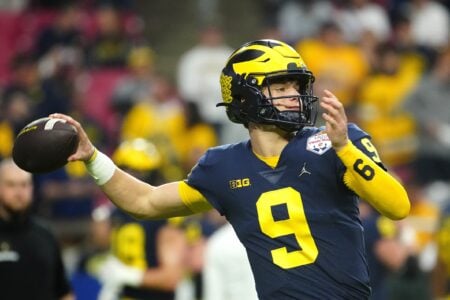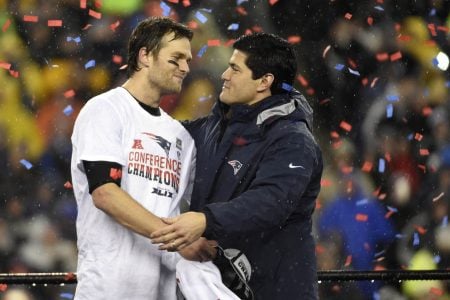Fencer
Pro Bowl Player
- Joined
- Oct 2, 2006
- Messages
- 14,293
- Reaction score
- 3,986
NFL Coaches Are Getting Away With Crimes Against Middle-School Math argues that KC should have gone for 2 before the onside kick. It is very correct. Yet, with the single exception of Brian Billick one time in 2001, coaches apparently always make the wrong choice.
The question may be paraphrased as:
A. The team fails to score the second TD.
B. The team succeeds in scoring the second TD.
Since in case A the decision is irrelevant, the choice can assume case B will occur.
Exercise for the reader: Spell that out in the notation of conditional probabilities.
OK.
Let K be the probability of kicking an extra point. You may approximate it as 1.0.
Let T be the probability of succeeding on a 2-point try. You may approximate it as 0.5.
Let O be the probability of winning in overtime if things get that far. You may approximate it as 0.5
Strategy 1: Kick after both TDs.
Then the "probability" of winning is K * K * O, which is ~= to 0.5
Strategy 2: Kick after the first TD; go for 2 after the second.
The the "probability" of winning is K * T, which is ~= 0.5
Strategy 3: Go for 2 after the first TD; if you succeed kick after the second, but if you fail go for 2 again.
Then the "probability" of winning is T * K + (1 - T) * T * O, which is ~= 0.5 + 0.25 = 0.75 Edit: Actually, 0.625, with my error demonstrating that this stuff isn't totally easy.
That's a huge difference.
I put "probability" in quotes because it's actually the probability conditional on getting the second TD.
The question may be paraphrased as:
- If a team is down 14 points and
- If the team scores a TD and
- If it is safe to assume that the only additional scores before OT will be another TD by that team plus any conversions,
- Then should the team immediately go for 2?
A. The team fails to score the second TD.
B. The team succeeds in scoring the second TD.
Since in case A the decision is irrelevant, the choice can assume case B will occur.
Exercise for the reader: Spell that out in the notation of conditional probabilities.
OK.
Let K be the probability of kicking an extra point. You may approximate it as 1.0.
Let T be the probability of succeeding on a 2-point try. You may approximate it as 0.5.
Let O be the probability of winning in overtime if things get that far. You may approximate it as 0.5
Strategy 1: Kick after both TDs.
Then the "probability" of winning is K * K * O, which is ~= to 0.5
Strategy 2: Kick after the first TD; go for 2 after the second.
The the "probability" of winning is K * T, which is ~= 0.5
Strategy 3: Go for 2 after the first TD; if you succeed kick after the second, but if you fail go for 2 again.
Then the "probability" of winning is T * K + (1 - T) * T * O, which is ~= 0.5 + 0.25 = 0.75 Edit: Actually, 0.625, with my error demonstrating that this stuff isn't totally easy.
That's a huge difference.
I put "probability" in quotes because it's actually the probability conditional on getting the second TD.
Last edited:


















